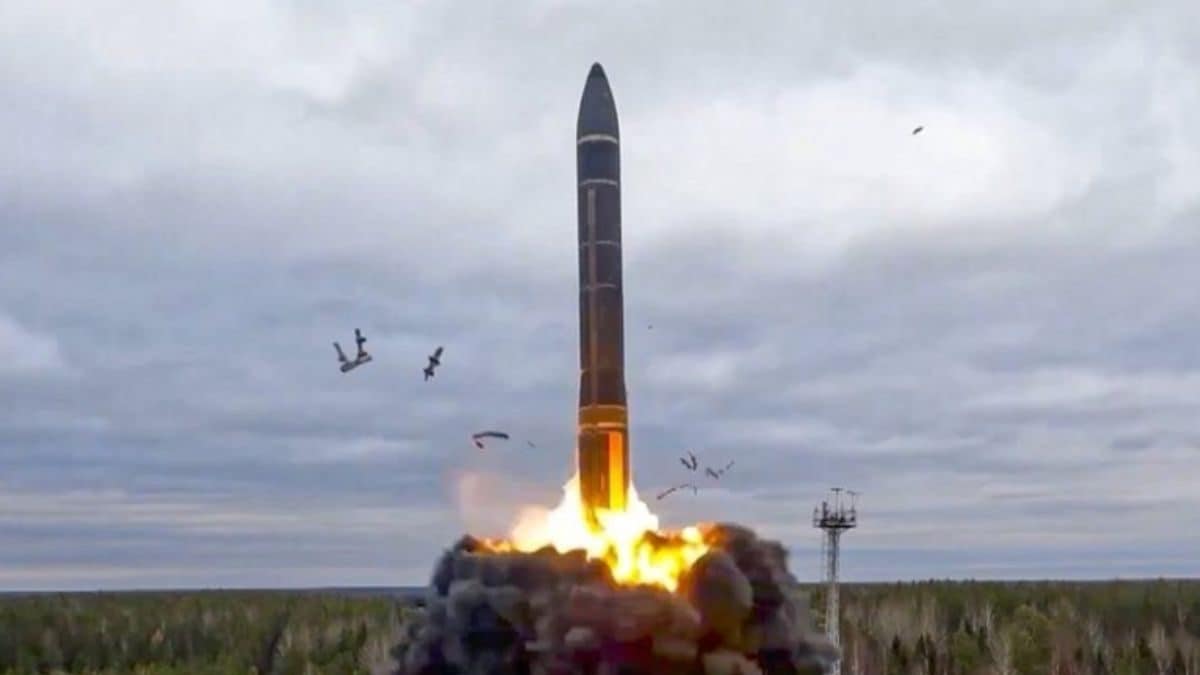Last Updated: September 22, 2024, 19:08 IST
Colombo, Sri Lanka

Dissanayaka's once-marginal Marxist party led two failed uprisings in the 1970s and 1980s that left more than 80,000 people dead. (Photo: AP file)
Dissanayake, who leads People’s Power (NPP) and Janatha Vimukthi Peramuna (JVP) has positioned itself as a voice for change, appealing to voters disillusioned by traditional political structures.
Marxist leader Anura Kumara Dissanayake is set to become the next President of Sri Lanka, leading the other candidates according to initial vote count tallies released on Sunday.
The ongoing count in the recently concluded poll showed Dissanayake on 42% with just over a million votes counted, well above his nearest rivals. Opposition leader Sajith Premadasa was in second, with 33% of the vote. Incumbent President Ranil Wickremesinghe — who took office at the peak of the 2022 economic collapse and imposed tough austerity policies per the terms of an IMF bailout — was trailing at a distant third with around 17% of the vote, as reported by news agency AFP.
The 2024 presidential election, held on September 21, is as the country seeks to recover from the worst economic crisis and widespread protests in its history and the resulting political upheaval in 2022. Contested by 38 candidates, it was largely a three-way race between Dissanayake, Wickremesinghe and Premadasa. Wickremesinghe was elected by a parliamentary vote in July 2022 to cover the remainder of Gotabaya Rajapaksa’s five-year term.
Who is Anura Kumara Dissanayake?
Dissanayake, who leads People’s Power (NPP) and Janatha Vimukthi Peramuna (JVP) has positioned itself as a voice for change, appealing to voters disillusioned by traditional political structures.
His party emerged from the JVP, a Marxist-oriented group that has historically focused on social justice and anti-corruption.
Born into a working-class family in Thambuttegama, Dissanayake rose to prominence as a student leader in the 1990s espousing the idea of communism in the island country. By 1998, he had joined the JVP’s decision-making body, the politburo, as reported by Indian Express.
His first break came in the year 2000 when he won a Parliamentary seat. A few years later, he was made a Cabinet minister in the President Chandrika Bandaranaike Kumaratunga government. A year later he resigned from his post.
Dissanayake first ran for president in 2019 but garnered only about 3% of the vote.
What Dissanayake Promised?
The NPP proposed to break away from what many perceived as “a cycle of corruption and mismanagement” that has plagued Sri Lankan politics for decades and attracted support from those who seek “system change”.
In his campaign speeches, he had highlighted the importance of accountability among politicians, asserting that previous leaders have failed to address the root causes of the economic crisis.
NPP’s manifesto also highlighted the need for substantial reforms in Sri Lanka’s education system, public health services, and addresses housing shortages.
A pre-election opinion survey showed Dissanayake was leading in voting preferences at 36%, followed by Premadasa and Wickremesinghe at third.
How Sri Lanka Presidential Election Takes Place?
The Sri Lankan election system allows voters to select three candidates on their ballots in the order of their preference. If no candidate secures a majority, the top two will be retained and the ballots of the eliminated candidates will be checked for preferences given to either of the top two candidates, and those votes will be added to their respective tallies. The candidate with the highest number of votes after that will be declared the winner.
![]()
Shobhit Gupta is a sub-editor at News18.com and covers India and news. He previously worked with Hindustan Times Digital (HTDS) and NDTV
...Read More

 1 month ago
1 month ago
















